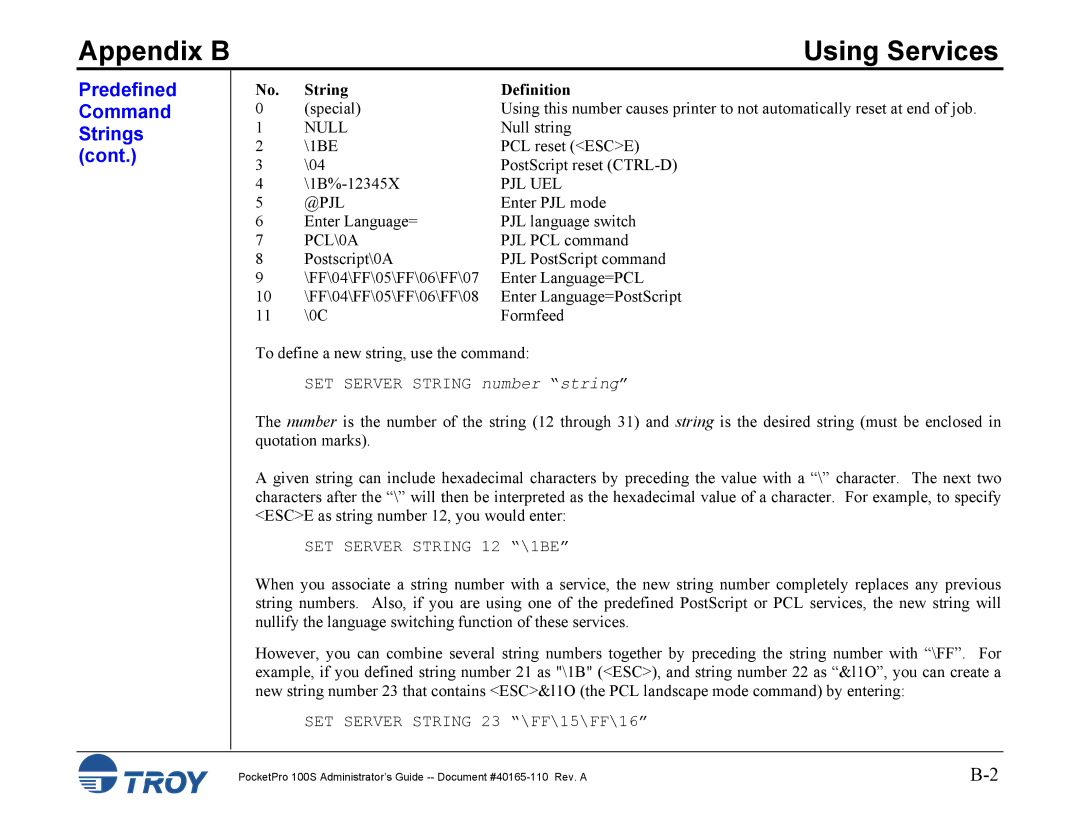
Appendix B | Using Services |
Predefined Command Strings (cont.)
No. | String | Definition |
0 | (special) | Using this number causes printer to not automatically reset at end of job. |
1 | NULL | Null string |
2 | \1BE | PCL reset (<ESC>E) |
3 | \04 | PostScript reset |
4 | PJL UEL | |
5 | @PJL | Enter PJL mode |
6 | Enter Language= | PJL language switch |
7 | PCL\0A | PJL PCL command |
8 | Postscript\0A | PJL PostScript command |
9 | \FF\04\FF\05\FF\06\FF\07 | Enter Language=PCL |
10 | \FF\04\FF\05\FF\06\FF\08 | Enter Language=PostScript |
11 | \0C | Formfeed |
To define a new string, use the command:
SET SERVER STRING number “string”
The number is the number of the string (12 through 31) and string is the desired string (must be enclosed in quotation marks).
A given string can include hexadecimal characters by preceding the value with a “\” character. The next two characters after the “\” will then be interpreted as the hexadecimal value of a character. For example, to specify <ESC>E as string number 12, you would enter:
SET SERVER STRING 12 “\1BE”
When you associate a string number with a service, the new string number completely replaces any previous string numbers. Also, if you are using one of the predefined PostScript or PCL services, the new string will nullify the language switching function of these services.
However, you can combine several string numbers together by preceding the string number with “\FF”. For example, if you defined string number 21 as "\1B" (<ESC>), and string number 22 as “&l1O”, you can create a new string number 23 that contains <ESC>&l1O (the PCL landscape mode command) by entering:
SET SERVER STRING 23 “\FF\15\FF\16”
PocketPro 100S Administrator’s Guide |
